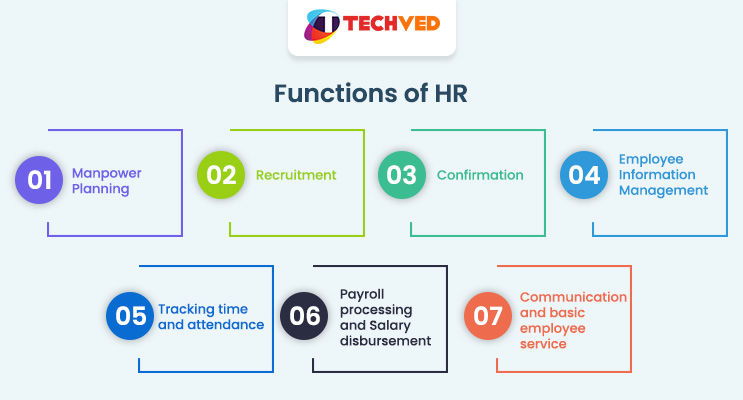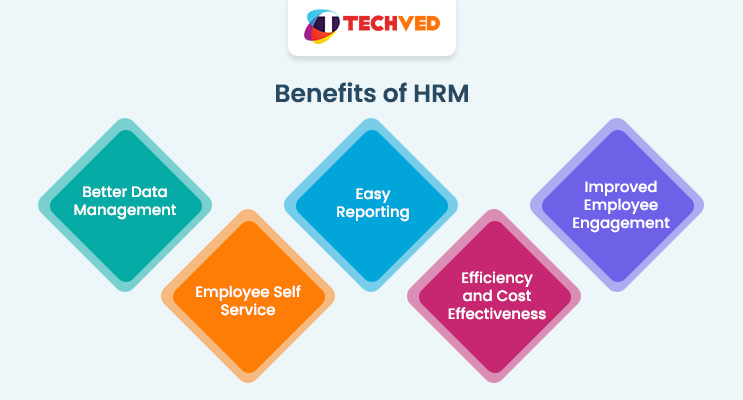 Human Resources(HR) is one of the most important departments of a company. This particular department acts as the backbone of the company. Their main task is to manage the entire workforce of the company. HR representatives are known to handle several duties and loads of information on a daily basis. Imperative tasks like recruitment, performance evaluation and payroll are some of the main functions that are performed by the HR department. All these tasks can be extremely time-consuming when done manually.
Human Resources(HR) is one of the most important departments of a company. This particular department acts as the backbone of the company. Their main task is to manage the entire workforce of the company. HR representatives are known to handle several duties and loads of information on a daily basis. Imperative tasks like recruitment, performance evaluation and payroll are some of the main functions that are performed by the HR department. All these tasks can be extremely time-consuming when done manually.
This where HRMS comes into the picture. With the help of HRMS tools, one can easily handle all the tasks in a significantly lesser time as compared to manually. It does not just help in reducing the workload, but it promotes efficiency in work as well. It is these tools that help HR representatives understand the employees of the company better.
In this article, you will learn about HRMS and the impact it has created on the working culture as a whole.
What is an HRMS?
An HRMS (Human Resource Management System) is a type of HR software that simplifies the management of several HR functions through the use of innovative information technology.
Whether it a software solution or software as a service, an HRMS can be an HR representatives best friend. It stores and organizes data such as employee profiles, schedules, attendance records and much more.
An HRMS improves the productivity and efficiency of the business through the automation of manual and repetitive tasks. This, in turn, also enables HR to address more strategic, critical business tasks.
Functions of HR

Before getting into HRMS, it is necessary to gain perspective on the various functions of HR. Human Resource Management (HRM, or simply HR) is in every organization which has primarily been designed to increase employee performance in alignment with the employer's objectives. HR is primarily focused on how people are managed within organizations, focusing on systems and policies. A few have been listed down below as follows:
1. Manpower Planning
Human Resource planning mainly emphasizes the estimation of resources required in order to achieve desired business results. HR plans can be either short term/immediate or long term/strategic, depending on requirements and available resources.
2. Recruitment
Recruiting employees with the right skills at the right time is an important task. It includes filling positions through initiatives like promotions, internal job posting and employee referrals.
3. Confirmation
After an employee joins, he goes through a ‘Probation Period’ of 1-6 months. In this period, the organization and the employee review each other and decide on whether each of them would like to continue the association with the other. At the end of the Probation period, the employee would normally go through a confirmation process.
4. Employee information management
Ensuring that the correct and updated information of the employees is maintained is one of the most critical jobs of the HR department as a lot of organizational decisions by the management is taken based on this data.
5. Tracking time and attendance
On a daily basis, tracking the amount of time worked by an employee is drawing a lot of attention of organizations and consequently of HR departments. Apart from using this information for Payroll processing, organizations would also need to generate a number of reports based on the attendance data.
6. Payroll processing and salary disbursement
Payroll processing is an extremely critical activity for both the organization and the employee. It is directly related to one of the core reasons individual works for an organization. Payroll processing also involves the calculation of all dues and generating the necessary reports. Besides, employees need to be informed about the salaries paid to them, tax deduction calculations, reimbursement balances, etc.
7. Communication and basic employee services
One of the functions of an HR department is to enable and ensure regular communication between the organization and the employees. Employees need to be made aware of various policies like the Leave policy, attendance policy, travel policy, dress code, etc. Then there could be various rules and regulations which an employee would need to follow in the organization. Any changes to these policies or significant events and other information that would affect the employees would also need to be communicated.
The HR department needs to ensure the above-mentioned functions in order to create a healthy working environment.
Benefits of using an HRM

With AI becoming the need of the hour, everything is powered by having the right information at the right time.
This is not just limited to big organizations but also start-ups and growing companies that are facing additional challenges which can only be streamlined by having a proper system in place. The benefits an organization can reap have been listed down below.
1. Better data management
HR data is some of the most sensitive data existing within an organization. The earlier approach to storing and managing this data was paper-based, which demanded heavy investment in the space and time required. Then came the era of spreadsheets which proved to be error-prone and time-consuming. The answer to all the above problems came in the form of HRMS, which is, paperless and hence eliminates the problem of being misplaced or incomplete.
HRMS also allows for the tracking of real-time data across various HR functions such as leave, attendance, and payroll. This becomes invaluable at a time when employees are increasingly being viewed as customers and employee engagement has become a key part of organizational nomenclature.
2. Employee self-service
Employee self-service refers to an information site that is available to employees in one central hub. Modern HRMS comes in handy with an employee self-service portal that gives employees access to all their data. They can now view/download their payslips, view leave updates and real-time attendance data and their tax liabilities for the month or year without the need to approach HR.
3. Easy reporting
An HRMS allows you to generate a number of predefined reports immediately without set up. Additionally, powerful filters allow you to generate any reports around the workforce based on a number of parameters on an on-demand basis, usually on the request of senior management. Moreover, HR dashboards give you a quick view of important information, all on a single screen.
4. Efficiency and cost-effectiveness
Modern cloud HRMS come at a highly cost-effective price. The cost benefits you stand to reap outweigh the meagre investment involved in obtaining them. For instance, payroll management costs come down significantly the risk of being slapped with fines and penalties is taken right out of the picture. Additionally, the duplication of information is avoided which saves time and improves the overall efficiency of the department. Leave management becomes streamlined and is now capable of being handled between employees and their reporting managers, rather than involving HR. A similar thing occurs with respect to attendance management as well.
5. Improved employee engagement
An engaged employee is a highly productive employee. With this in mind, it is easy to see how features such as employee self-service, timely and accurate payroll management, improved attendance management, etc., help an organization achieve its goals by keeping employees engaged and ensuring an overall productive working environment. HR functions that would have otherwise been extremely chaotic become streamlined and lead to higher employee satisfaction levels.
Final Thoughts
All in all, an HRMS is the new paradigm of automation in the HR industry. Cost-effective and extremely easy to get started with. Such systems not only boost the efficiency and productivity of your business but also lay the foundations of organizational change.
Without a doubt, HRM has revolutionized management forever!